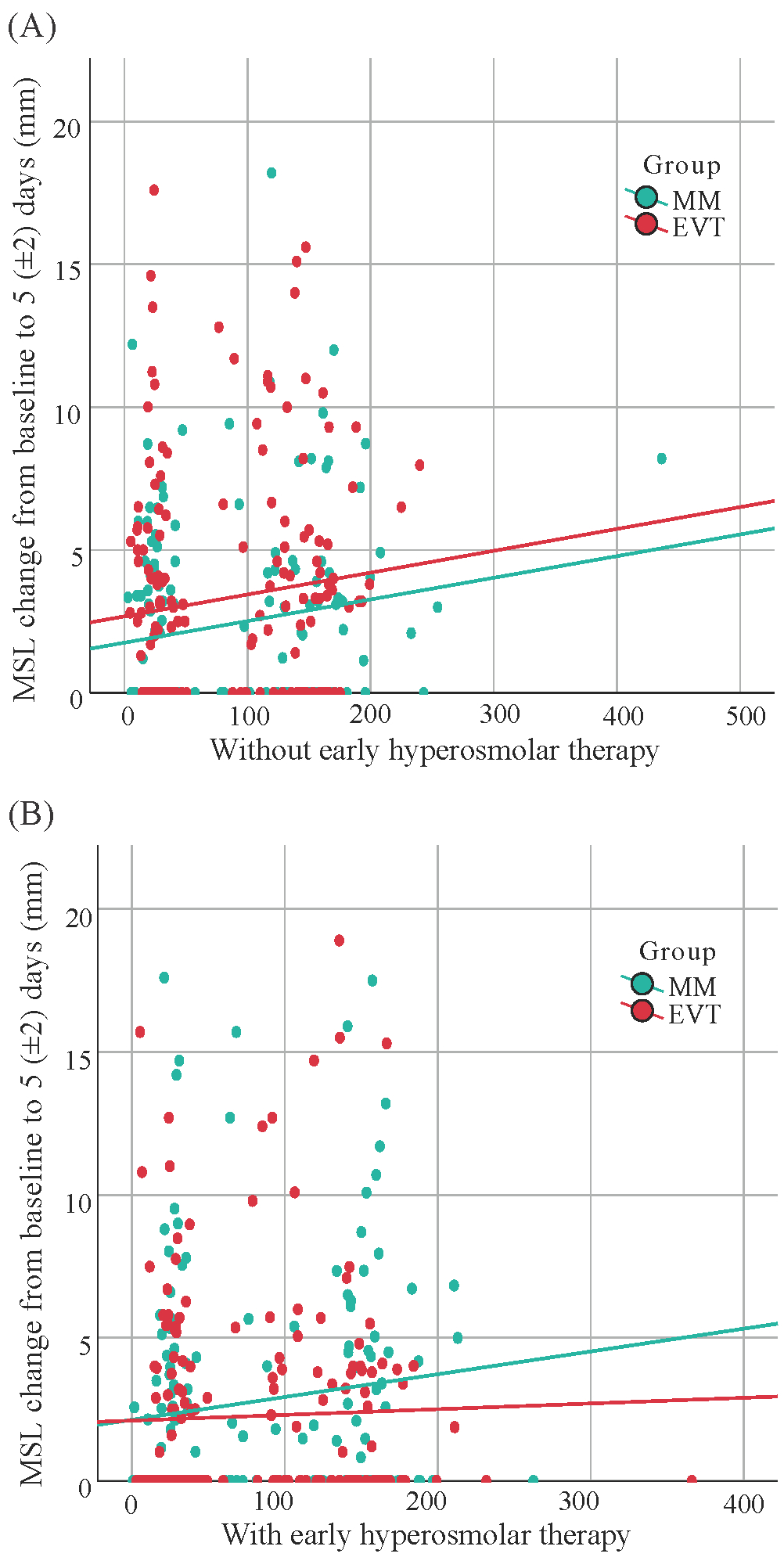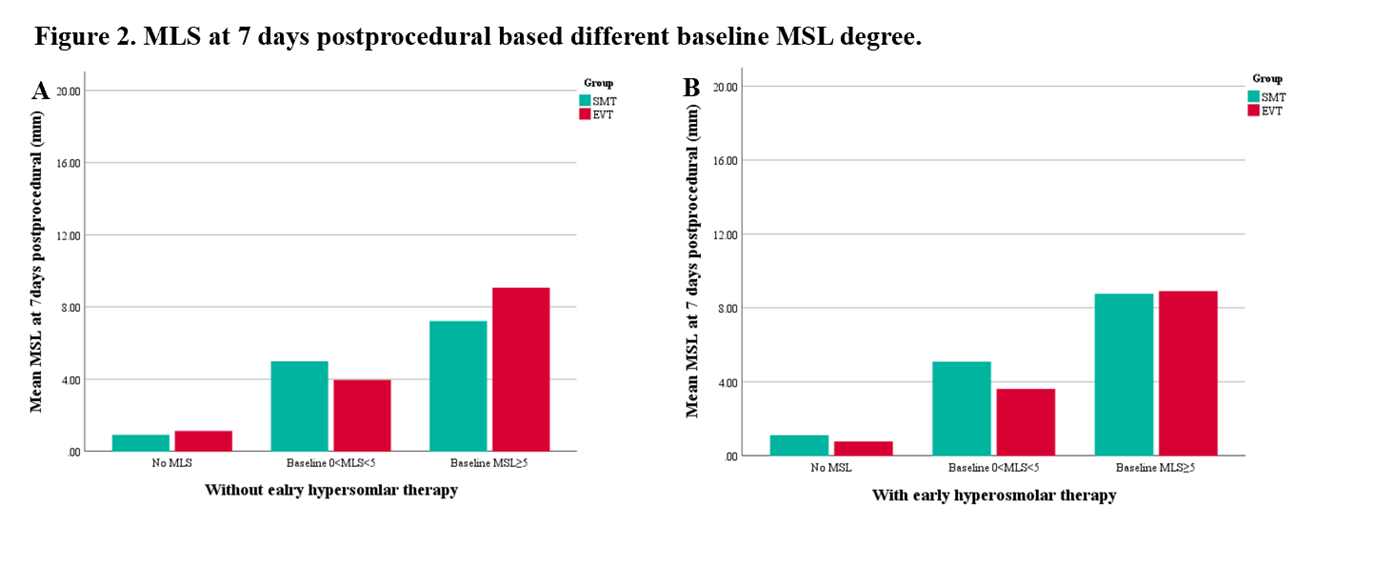Final ID: LBP26
Impact of Early Hyperosmolar Therapy on Cerebral Oedema and Outcomes in Large Infarcts Undergoing Endovascular Thrombectomy
Methods: This was a secondary analysis of the ANGEL-ASPECT trial (Endovascular Therapy in Acute Anterior Circulation Large Vessel Occlusive Patients with Large Infarct Core), a multicenter, randomized, controlled trial that enrolled 456 patients receiving either EVT or medical management (MM). For this analysis, patients were categorized into an early hyperosmolar therapy group and a control group based on whether hyperosmolar therapy was administered within 24 hours of randomization. Patients without complete data on post-EVT treatment were excluded. The primary outcome was midline shift (MLS) at 5 (±2) days after randomization.
Results: A total of 438 patients were included, with a mean age of 66.0 years (standard deviation [SD] 10.0), and 61.9% (271) being female. At 24 (±12) hours after randomization, patients in the EVT group showed a significantly greater MLS compared to the MM group (mean [SD]: 3.0 [4.2] mm vs. 2.4 [3.6] mm; p = 0.03). However, no significant difference in MLS was observed at 5 (±2) days between those who did or did not receive early hyperosmolar therapy, in either treatment group. Interestingly, patients who received early hyperosmolar therapy showed a higher likelihood of MLS recovery at 5 (±2) days in the EVT group compared to the MM group (adjusted odds ratio [aOR]: 5.76; 95% CI: 1.18–28.20; p = 0.03) (Figure 1). A trend toward greater MLS reduction was also observed in patients treated with early hyperosmolar therapy compared to those without, particularly in the subgroup with baseline MLS >5 mm, although this difference did not reach statistical significance (Figure 2).
Conclusion: Early hyperosmolar therapy did not significantly reduce cerebral oedema progression or enhance the benefit of EVT. However, it was associated with a higher percentage of oedema recovery during the later stages after EVT. Future research is needed to explore population-specific and evidence-based hyperosmolar strategies to guide individualized treatment.
More abstracts on this topic:
Xu Xiaohong, Preeti Preeti, Yu Ruoying, Shaykhalishahi Hamed, Zhang Cheng, Shen Chuanbin, Li Bei, Tang Naping, Chang Yan, Xiang Qian, Cui Yimin, Lei Xi, Ni Heyu, Zhu Guangheng, Liu Zhenze, Hu Xudong, Slavkovic Sladjana, Neves Miguel, Ma Wenjing, Xie Huifang
Albumin for Patients With Acute large Vessel Occlusive Stroke Undergoing Endovascular Treatment: A Multicenter, Randomized Double-blind, Placebo-Controlled Clinical TrailJi Xunming, Wu Chuanjie, Li Chuanhui, Liu Yuanyuan, Dong Xiao, Ma Zhengfei, Wu Di, Xu Yi, Zhou Chen
Readers' Comments
We encourage you to enter the discussion by posting your comments and questions below.
Presenters will be notified of your post so that they can respond as appropriate.
This discussion platform is provided to foster engagement, and simulate conversation and knowledge sharing.
You have to be authorized to post a comment. Please, Login or Signup.


